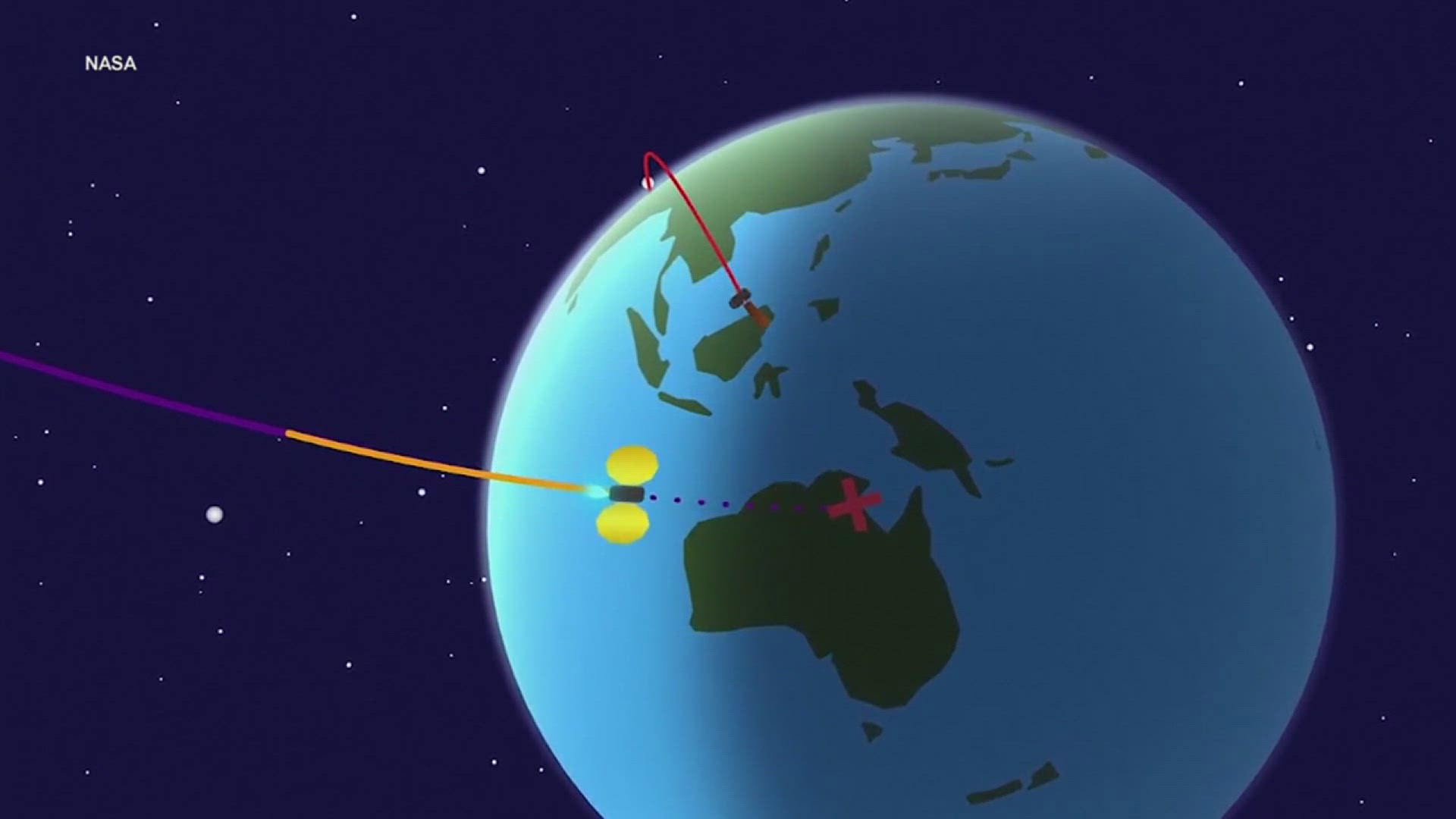MOLINE, Ill. — For the next few weeks, we'll have a tiny, second 'moon' orbiting our planet.
The so-called mini-moon is actually a small asteroid known as 2024 PT5. It's only about 32 feet across, making it roughly the size of a school bus. The asteroid was discovered in August by the University of Hawaii and NASA’s Asteroid Terrestrial-impact Last Alert System.
Scientists say the asteroid was traveling around the sun when it was temporarily pulled into Earth's orbit.
"What's actually kind of wild about this is we discovered this asteroid, this mini-moon, essentially after its closest approach," Casey DeRoo, who is an associate professor at the University of Iowa's Department of Physics and Astronomy, said.
It's not the first time Earth has gotten a mini-moon. The phenomenon most recently happened in 2022 and in 2020.
This asteroid is predicted to follow a "horseshoe path," or what's considered a “temporarily captured flyby." This is when an object doesn't complete a revolution around Earth before taking off again.
"It'll do this sort of lazy orbit where it forms an ellipse, or like a distended circle, and then we'll go through a brief period where it's most under the influence of Earth's gravity from about Sept. 29 until Nov. 25," DeRoo said. "Then it'll carry on its merry way for another 30 years until we interact with it again."
However, you won't be able to see the mini-moon with your bare eyeballs. Asteroids only reflect light coming off of nearby stars, making it very dim. Combine that with just how small it is, and it'll be impossible to spot without professional equipment.
Still, DeRoo says this discovery should actually make people feel safer.
Contrary to science fiction movies where Earth-ending asteroids can slam into our planet with almost no warning, DeRoo says scientists know what's headed our way. In the mid-2000s, Congress charged NASA with a new mandate to find and identify all Near-Earth Objects, or NEOs.
"And we have actually mostly succeeded at that task," DeRoo said. "So the asteroids that we worry most about, the big ones, we found at least 98% of them over that course of those 20 years. And we have got them tracked out to the point that we would know if they were coming for a collision course with Earth, but with at least five years of lead time."
DeRoo also pointed to NASA's DART mission. This was the first-ever attempt to redirect an asteroid using human technology. The 2022 mission ended up being a success, as a NASA-launched spacecraft used kinetic impact to alter the orbit of the asteroid Dimorphos.
"So mostly what I think about this kind of discovery is it shows, like when we put effort into public funding, we can actually solve existential problems related to us," DeRoo said. "We actually don't really lose a lot of sleep about asteroid impacts, nor should we, because we've actually spent the time and the money and the legwork and the scientific know-how to kind of retire this threat."
Tune into The Current from 4 to 5 p.m. on weekdays to catch live interviews impacting you, your family and your hometown as well as all of the biggest headlines of the day.

